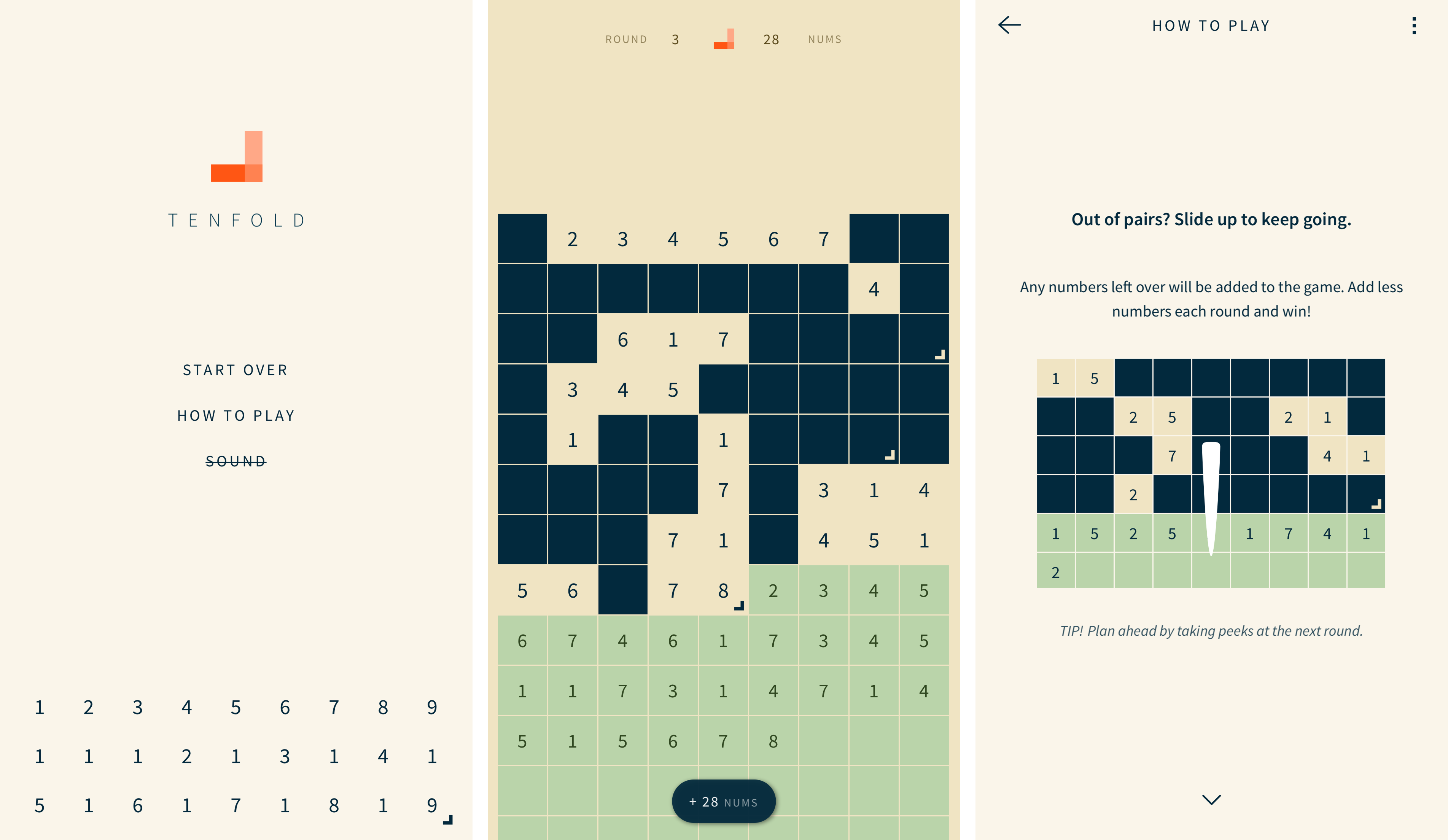Tenfold is on the App Store!
I tried my hand at designing and building a minimal number game for iOS, inspired by the pen-and-paper version I used to play in school.
💡 2024 update: Tenfold is long since gone from the App Store, but the below is a brief overview of the design process.When I was in school, a meditative and highly addictive number game that you could play in the margins of your notebook was all the rage. It's a game you play alone, against yourself — think Solitaire — with the aim of filling in rows and rows of numbers and clearing them methodically until everything is crossed out.
Nobody knew where it came from, or what it was called (we just referred to it as the number game), but it was perfect for the times when you needed to look engaged but craved to just zone out and get stuck in a flow of numbers.
Between concluding my work at MOO and gearing up to start my dissertation research, I took a couple of months off to reset, and reproducing this game as an iOS app seemed like an interesting project to delve into.
The design
The game is played by writing out rows of numbers, nine per row, crossing out eligible pairs, and repeating all numbers that weren't crossed out so you can start over again in a new pattern. The game ends when all numbers have been cleared.1
My obsession with reproducing the game in iOS lay in this repeating pattern at the bottom of the column — the portrait proportions of a smartphone combined with motion effects like resistance scrolling and the bounceback popularised on iOS would be a perfect setting for a game that starts at the bottom of the screen and adds numbers when you pull up from under the fold.

The onboarding
The rules of the game are fiddly (likely as a result of being retold over and over again by word of mouth, creating a kind of playground myth), and coming up with a way to convey how the game is played was one of the main design challenges of the project.
I decided on a learn-by-doing approach, where the user is immediately presented with a new game, and coached through example moves and pairing rules as they go. More complex pairing rules are disclosed progressively as they complete each example.
Once the tutorial finishes, the same rules can also be seen as animated examples in an instructions view.
Sound effects
I knew satisfying sound effects and tactile feedback would be perfect to enhance the sense of success when you cross out a pair or clear a whole row. Different vibration patterns are simple to add in code, but I couldn't quite find the right premade sounds (calm, muted, subtle).
Having no experience in sound design, but a clear vision of what I was after, I did my best by recording some blips and clicks in the most soundproof room available to me — the sauna. It always made me chuckle later that hundreds of people would be hearing me click my tongue in a cold sauna while playing.
I published the app on the App Store and saw some moderate organic success — during the years it was available, Tenfold got a few thousand total downloads, lovely reviews, feature requests, and bug reports from a small but devoted fanbase.

-
This is rare — the point of the game is less about winning and more about entering flow. I have pages and pages worth of unfinished games as proof, and a report from a disappointed user who was on round 256 when the app crashed for them. ↩
About Elise Hein
I’m a design engineer at Plain. Previously, led design systems at Griffin, helped build products for healthcare research at Ctrl Group, worked on personal digital branding at MOO, and researched development practices at UCL for my master’s degree in HCI.